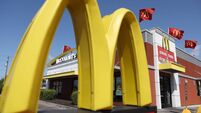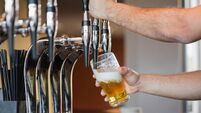Comet samples 'overwhelm' scientists
A canister containing particles trapped after the Stardust space probe's 2004 encounter with Comet Wild-2 landed on Earth on Sunday. The samples were taken to the Johnson Space Centre in Houston for inspection.
"This exceeded all of our grandest expectations," Donald Brownlee, a University of Washington-based researcher and the principal Stardust investigator, told a news conference.
When the sample canister inside the capsule was opened, scientists could see, with the naked eye, small black rocks and other particles that had been trapped in the probe's gel-filled collection device.
"We were totally overwhelmed by the ability to actually see this so quickly and so straightforwardly," Mr Brownlee said.
The samples were trapped in a substance called aerogel, which although it has the same ingredients as a glass window is 99.9% air and has the lowest density of any solid substance.
The Stardust spacecraft lifted off seven years ago and aimed for a close encounter with Comet Wild-2, a relative newcomer to the comparatively warmer region of space between the orbits of Mars and Jupiter.
The comet is believed to come from the Kuiper Belt region beyond Neptune, but had a close approach to Jupiter in 1974 which deflected the icy body into its new orbit.
Because Wild-2 has not been circling near the sun for long, the comet is believed to contain most of its original materials.
Scientists say comets contain leftovers from the solar system's creation.
"We've brought back an ancient cosmic treasure from the very edge of the solar system," Mr Brownlee said.
Researchers are eager to study the comet samples to help answer questions about how the Earth and its sister planets formed and what comprised the original disc of interstellar dust that incubated and fed the early solar system.
Comets, for example, may have seeded Earth with the organic materials and water that eventually led to life.
The same process may have happened on other planets, such as Mars, and may be happening today in other solar systems.
The chunks of Stardust's aerogel contain "hundreds and hundreds and hundreds of tracks" from comet particle impacts, some of which may even end with a few atoms of water ice, Mr Brownlee said.
One hole, which ends with an embedded rock, is so large, you can nearly poke a finger in, he said.
Scientists expect to get more than a million particles larger than one-millionth of a metre in diameter.
SIFTING through the 1.5 million images of the aerogel to look for a trail left by the dust in the gel would take the Stardust team more than 20 years.
This is where the public - you - come in.
Volunteers who sign up to a special website (http://stardustathome.ssl.berkeley.edu) will be sent cross-section digital images from the gel.
Their task will be to scrutinise each image to look for an impact trail, something which to the uncultured eye looks rather like a hairy carrot.
This way, a 20-year search could be compressed to just seven months.
Four volunteers will view each image. If two of them separately see a track, that image will be fed to 100 more volunteers for verification.
If at least 20 of these report a track, a UCB team will then carry out a confirmation.
If they give the green light, the grain will be extracted for analysis.
And the reward? Discover the grain, and you get to put a name on it.














